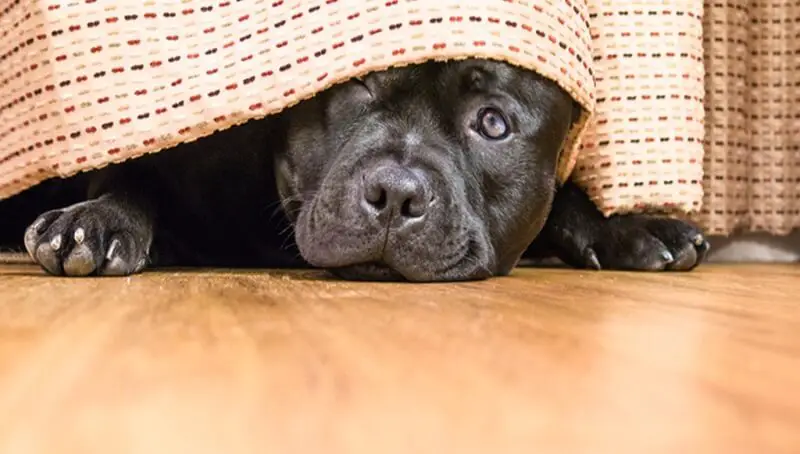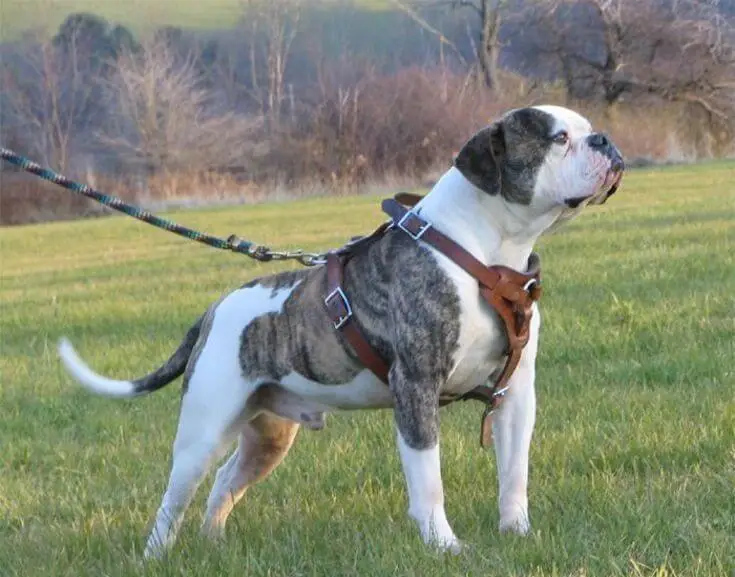Highlights: Panic Attacks in Dogs
- Can Dogs Suffer From Panic Attacks?
- Yes, dogs can experience panic attacks with symptoms similar to humans, including physiological responses like increased heart rate, panting, agitation, and more.
- Signs of a Dog Having a Panic Attack
- Signs include panting, agitation, trembling, excessive salivation, hiding, seeking owner’s attention frantically, and uncontrollable urination among others.
- Distinguishing Between Anxiety, Phobias, and Panic Attacks in Dogs
- Phobias are intense reactions to specific triggers, such as storms or fireworks.
- Anxiety occurs from anticipated threats, showcasing signs like panting and vocalization.
- Panic Attacks typically happen without any identifiable trigger, marked by sudden intense fear or discomfort.
- Tips for Helping Dogs Cope With Panic Attacks
- Veterinary Check: First, ensure there are no medical reasons for the panic attacks.
- Exercise and Mental Stimulation: Engage your dog in physical activities and mental exercises to reduce stress.
- Comfort During Panic Attacks: Comfort your dog by redirecting attention, offering physical comfort, or providing a quiet, stimulus-free hiding space.
- Use of Supplements/Medications: Natural supplements like L-theanine or medications prescribed by a veterinarian can help manage symptoms.
Conclusion
Understanding panic attacks in dogs involves recognizing the signs, knowing how to differentiate them from anxiety or phobias, and employing strategies to comfort and treat affected dogs. With proper care and attention, dogs suffering from panic attacks can lead comfortable and stress-reduced lives.
Anticipating a frightening or negative experience with certain people, objects, animals, or situations can lead to anxiety. When does anxiety turn into a panic? Can dogs suffer from panic attacks? In this article, I will try to explain everything you need to know about panic attacks in dogs.Can dogs suffer from panic attacks?
Dogs can certainly experience panic attacks, similar to humans. There are many people who suffer from panic attacks and they describe them as a sudden feeling of intense fear.
They may experience a physiological response, such as an increased heart rate. They can also sweat, tremble, get nauseous, and have headaches.
There is usually no specific trigger, but panic attacks can occur during periods of intense stress.
How can you tell if a dog has a panic attack?
Of course, we can’t ask a dog how he feels, but we can look for signs of panic, such as:
- Shortness of breath/panting;
- Agitation;
- Tremble;
- Excessive salivation;
- Search for a hiding place;
- Seeking the attention of the owner in a frenetic manner;
- Jumping with its paws on the owner;
- Digging in bed, closet, or bathroom;
- Vomiting;
- Gastrointestinal disorders, immediate defecation or diarrhea, for example;
- Uncontrollable urination.
How to tell the difference between anxiety, phobias, and panic attacks in dogs
Phobias vs. Panic attacks in dogs
You might also like my articles about:
- Common reasons for a dog to start whining
- Is a dog shaking and acting weird a reason to worry
- Reasons your dog scratches and digs the floor at night
The way we distinguish a phobia from a panic attack is based on the presence of a trigger. If there is a specific trigger that causes those intense reactions from your dog, then it can be classified as a phobia.
People with phobias have described it as experiencing an irrational fear of something. This feeling can be similar in dogs.
The trigger can be anything from the environment like a sound, person, object, location, or situation. Many dogs experience phobias from storms and fireworks.
Usually, there is no trigger that causes panic attacks in a dog.
Anxiety vs. Panic attacks in dogs
 Anxiety occurs when your dog is afraid of a particular event or situation. The anticipated threat can be real or perceived.
Anxiety occurs when your dog is afraid of a particular event or situation. The anticipated threat can be real or perceived.
An example is a dog that shows signs of anxiety before a trip to the vet. They understood the indications that they were going to the vet and became worried about the meeting. Some signs of anxiety in dogs include:
- Shortness of breath/panting;
- Agitation;
- Vocalization;
- The dog does his needs inappropriately or involuntarily;
- Seeking the attention of the owner;
- Ears lying back, head bowed, tail hanging down or hiding under the abdomen.
Tips to help dogs cope with panic attacks
Dogs suffering from panic attacks should be physically examined by their veterinarian. Diagnostic tests may be performed to rule out any medical causes of reactions.
Exercise and mental stimulation
Pet owners should make sure they provide plenty of physical and mental exercise for their dogs, as long as the veterinarian approves the level of exercise.
Taking a minimum of 15-20 minutes and/or 15-20 minutes of play each day can reduce your dog’s stress levels.
Puzzle toys can stimulate and tire the brain. Short training sessions can be useful to keep your dog mentally occupied.
Bring comfort to your dog during a panic attack
If your dog has a panic attack and comes to you for attention, you can comfort, hug, or hold them if this helps alleviate the symptoms of panic. Depending on how intense the episode is, you can try to:
- Divert his attention and redirect your dog to play with toys;
- Take the dog for a walk;
- Use basic hints or tricks for dog obedience for high-value rewards;
- Other dogs calm down just by being petted, brushed, or massaged by their owners.
You should also give your dog a place to hide. Play soothing classical music, and make sure the space does not contain external stimuli like household traffic, other pets, etc. You can also use dog pheromone sprays or plug-in speakers to help reduce anxiety in that location.
Supplements/medications to manage panic attacks
Some dogs may benefit from the use of natural supplements, such as L-theanine or L-tryptophan. These are ingredients that have a calming effect on animals.
However, if your dog suffers intense panic attacks, in which he gets hurt by trying to jump through the windows, if he gnaws or digs through the walls, he should be seen by a veterinarian to be prescribed anti-anxiety medication.
Anxiety medications can be used as needed. In some cases, a pet may be given daily medication to keep it calmer in general.
If your dog experiences panic attacks regularly, then maintenance medications can help him cope with these episodes. It can also reduce the frequency and duration of panic attacks.
Avoid punishing your dog
Just like with people, getting angry with someone who is experiencing panic rarely solves the problem. In most cases, it will only make the situation worse.
So, yelling at your dog, sprinkling water, forcing him to sleep, or using an electric training collar won’t help a dog suffering from a panic attack.
These techniques will only increase fear and anxiety. Your dog cannot control his emotions or physiological responses in these scenarios. If he could control himself and choose another option, he would probably do it.
Those who have experienced a panic attack have not described it as a pleasant experience, and they do not wish to experience one more. Your dog certainly needs your love and support to help him overcome these conditions.




